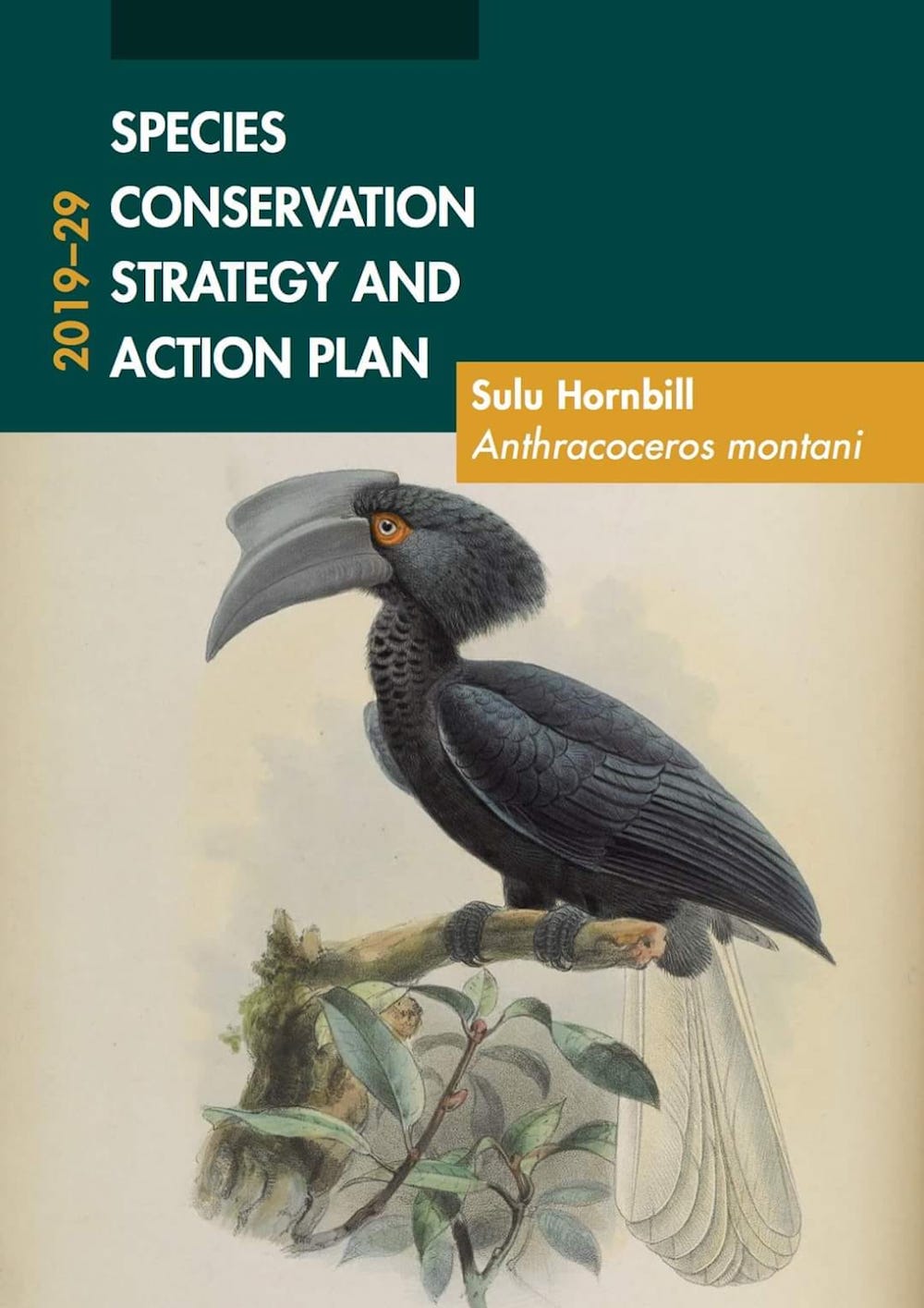See the 10-year Sulu Hornbill Conservation Strategy & Action Plan here.
Since its enlistment on the IUCN Red List of Threatened Species in 1994, the Sulu Hornbill has been included in the conservation efforts of a number of organizations. The Sulu Hornbill is considered a critically endangered species as its populations continue to decrease due to habitat loss and forest degradation.
The Philippine-endemic species is restricted to the Sulu archipelago (hence its name), specifically to one island of Tawi-Tawi. However, the bird is believed to have thrived in several other islands before going locally extinct and its population decreasing to as few as 40 individuals.
Organizations like Haribon Foundation and PhilBio undertook surveys to determine the number of Sulu Hornbills found in Tawi-Tawi’s forests as part of species conservation plan. Another significant action in conserving the Sulu Hornbill was publicly announcing the site as a wildlife sanctuary in 2017 and employed 16 Tawsi rangers from nearby villages to survey and protect the local hornbill population.
However, the species is still facing threats to its survival. Remaining forests where the Sulu Hornbill thrive are nearing total deforestation, leading to the bird possibly living within only 40% of its original distribution range.
“There are many challenges to saving this species,” Jon Paul Rodriguez, Chairman of the IUCN Species Survival Commission, said in a report on the conservation strategy and action plan for the Sulu Hornbill for 2019-2029.
He noted that these challenges include “the difficulty of working across its range due to various conflicts in the area,” due to Abu Sayyaf insurgents operating in the region. Other obstacles include illegal logging, mining, and the effects of the species’ small population.
That’s why in March 2019, various stakeholders drafted a plan based on scientific evidence of the Sulu Hornbill’s status and designed a 10-year action plan for its conservation.
“The key outcome was a prioritized set of objectives, activities, and timelines to guide and inform the implementation of conservation action,” Rodriguez said.
The conservation strategy and action plan for the Sulu Hornbill will run from 2019 to 2029 with the following goals:
- To protect the species’ habitat to support viable populations of the Sulu Hornbill;
- To engage communities in conservation, ensuring mutual benefits, and;
- To promote systems of governance, land use, and security that support conservation success for Sulu Hornbills in Tawi-Tawi.
Conservation of biodiversity and wildlife will never be an easy task, moreso if these actions are delayed. But if the ambitious conservation strategy and action plan is acted upon with determination, it will lead the way for the Sulu Hornbill to live in viable populations within its protected historic range, sustainably managed by empowered communities through culturally centered conservation programs that bring pride, ecosystem and socio-economic benefits to the people.
See the 10-year Sulu Hornbill Conservation Strategy & Action Plan here: https://cpsg.org/content/sulu-hornbill-conservation-strategy-and-action-plan

